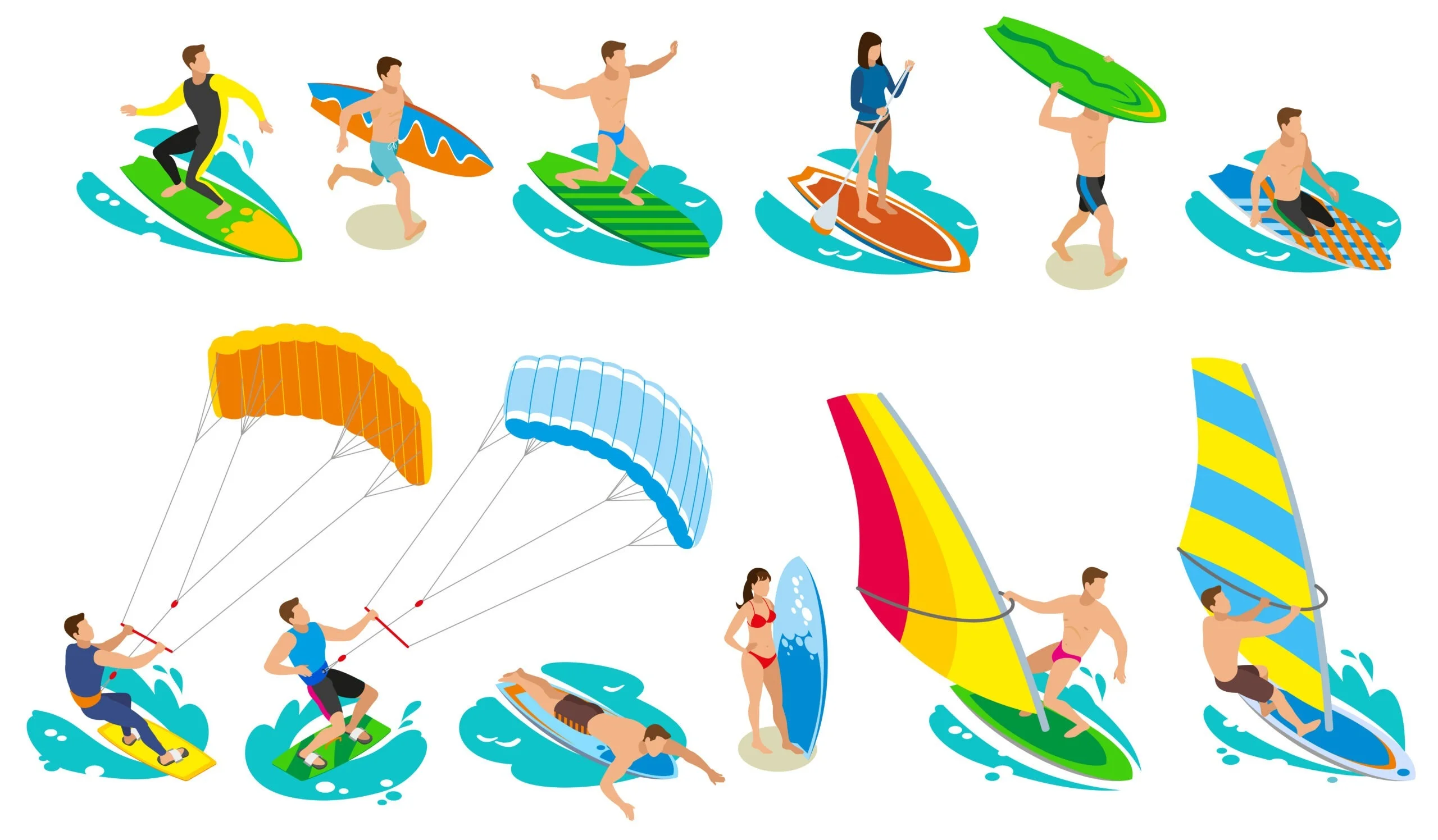Different Types of Surfing
Different Types of Surfing: A Comprehensive Guide
Different Types of Surfing :Surfing, a sport deeply rooted in ancient Polynesian culture, has evolved dramatically over the centuries. Today, it encompasses a diverse array of disciplines, each offering unique challenges and experiences. Whether you’re a seasoned wave rider or a curious beginner, understanding the different types of surfing can enhance your appreciation and involvement in this exhilarating sport. This guide delves into the various forms of surfing, highlighting their distinctive characteristics and appeal.
1. Surfing (Shortboarding)
Shortboarding is the most recognized form of surfing, often seen in competitions and popular media. This style involves using a shortboard, typically between 5’6” and 7’ long, designed for high-performance maneuvers. Shortboards are ideal for executing quick turns, aerials, and other advanced tricks, making them the go-to choice for professional surfers. The thrill of shortboarding lies in its fast-paced and dynamic nature, demanding agility, strength, and precision from the surfer.
2. Longboarding
Longboarding is a classic form of surfing that harkens back to the sport’s origins. Longboards are generally 9’ or longer, offering stability and ease of paddling. This style is characterized by graceful and fluid movements, such as nose riding and cross-stepping. Longboarding is perfect for those who appreciate a more relaxed and stylish approach to surfing. Its emphasis on elegance over aggression makes it accessible and enjoyable for surfers of all skill levels.
3. Big Wave Surfing
Big wave surfing is an adrenaline-pumping discipline reserved for the bravest surfers. It involves riding waves that are at least 20 feet high, often reaching heights of 60 feet or more. This type of surfing requires specialized equipment, such as big wave guns and tow-in boards, and often involves jet skis for towing surfers into massive waves. Big wave surfing locations like Mavericks, Jaws, and Nazaré are legendary for their monstrous swells and extreme conditions.
4. Stand-Up Paddleboarding (SUP)
Stand-up paddleboarding (SUP) merges surfing with paddling, offering a versatile water sport experience. SUP involves standing on a larger, more stable board and using a paddle to propel oneself through the water. While it can be done in various water conditions, SUP surfing focuses on catching and riding waves. This style is excellent for those looking for a full-body workout while enjoying the waves. It’s also popular for its versatility, allowing enthusiasts to explore flat water, rivers, and even whitewater rapids.
5. Kite Surfing
Kite surfing combines elements of surfing, wakeboarding, and paragliding. Using a large controllable kite to harness the power of the wind, kite surfers ride a small surfboard or a kiteboard. This sport requires strong wind conditions and open water spaces. The excitement of kite surfing lies in its potential for high-speed rides, big air jumps, and complex tricks. It’s a challenging sport that demands good coordination and balance.
6. Windsurfing
Windsurfing blends surfing with sailing, utilizing a board equipped with an attached sail. Riders use the wind to glide across the water’s surface, performing various maneuvers and tricks. Windsurfing can be enjoyed in a range of conditions, from calm lakes to choppy ocean waves. Its appeal lies in the combination of surfing’s fluidity and sailing’s precision, offering a unique and exhilarating experience.
7. Foil Surfing
Foil surfing, or hydrofoiling, introduces a futuristic twist to traditional surfing. It involves a surfboard with a hydrofoil attached to the bottom, lifting the board above the water’s surface as it gains speed. This creates a sensation of flying over the water, reducing drag and allowing for smoother, longer rides. Foil surfing can be done with various power sources, including waves, wind, or even boat wakes, making it a versatile and exciting option.
8. Bodyboarding
Bodyboarding is a variant of surfing where riders use a smaller, rectangular board, known as a bodyboard or boogie board. Riders typically lie on their stomachs, although kneeling or standing is possible. Bodyboarding is accessible to beginners and offers a different perspective on wave riding, focusing on catching smaller waves closer to shore. Advanced bodyboarders perform spins, flips, and other aerial maneuvers, adding a level of excitement to the sport.
9. Skimboarding
Skimboarding takes place on the shore, where riders use a small, finless board to glide across the thin film of water left by receding waves. Skimboarders can perform tricks on flat sand or venture out into the surf to ride waves back to shore. This sport requires quick reflexes and balance, offering a fun and challenging alternative to traditional surfing.
Conclusion
Surfing is a multifaceted sport with numerous disciplines, each offering unique thrills and challenges. Whether you’re drawn to the high-performance maneuvers of shortboarding, the graceful elegance of longboarding, or the adrenaline rush of big wave surfing, there’s a style for every wave enthusiast. Understanding these different types of surfing can help you choose the one that best suits your interests and skill level, enriching your overall surfing experience.
By embracing the variety within surfing, you can explore new ways to connect with the ocean and push your boundaries, making the most of your time on the water.

